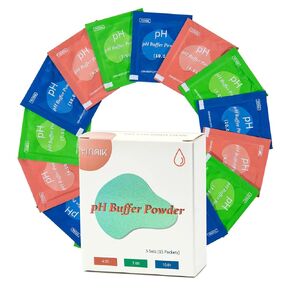- Shopping, made easy.
- /
- Get the app!
Citric acid is a weak organic acid with the formula C6H8O7. It is a natural preservative which occurs naturally in citrus fruits and is also used to add an acidic or sour taste to foods and drinks. In biochemistry, the conjugate base of citric acid, citrate, is important as an intermediate in the citric acid cycle, which occurs in the metabolism of all aerobic organisms. It consists of 3 carboxyl (R-COOH) groups. Citric acid is a commodity chemical, and more than a million tons are produced every year by fermentation. It is used mainly as an acidifier, as a flavoring, and as a chelating agent.
Organic Acid: organic acids are weak acids and do not dissociate completely in water, whereas the strong mineral acids do. Lower molecular mass organic acids such as formic and lactic acids are miscible in water, but higher molecular mass organic acids, such as benzoic acid, are insoluble in molecular (neutral) form.
C6H8O7: Molecular Formula for Citric Acid
Food Grade: USDA GradeStandards forFood: How They are Developed and Used. Department of Agriculture.
FCC: "Food Chemicals Codex" - (FCC) refers to a compendium of standards that is used internationally to ensure the quality and purity of food ingredients. The FCC helps manufacturers and consumers in recognizing genuine ingredients and substances and assures the quality of food products.
USP: A chemical grade of sufficient purity to meet or exceed requirements of the United States Pharmacopeia(USP); acceptable for food, drug, or medicinal use; may be used for most laboratory purposes.
NON GMO: Free of any Genetically Modified Organism
 Potassium Chloride - KCl - 1 Pound
KWD 4.500
Potassium Chloride - KCl - 1 Pound
KWD 4.500
 bluelab 732899 2.77EC Conductivity Solution, 250 milliliters Industrial-Products, Clear
KWD 5.500
bluelab 732899 2.77EC Conductivity Solution, 250 milliliters Industrial-Products, Clear
KWD 5.500
 YINMIK pH Calibration Solution Kit(4.00,7.00&10.01) with Free Gift pH Protective Solution,3 Bottles 50ml pH Calibration Buffer Solution and 2 bottels 10ml pH Probe Solution for pH Meters
KWD 5
YINMIK pH Calibration Solution Kit(4.00,7.00&10.01) with Free Gift pH Protective Solution,3 Bottles 50ml pH Calibration Buffer Solution and 2 bottels 10ml pH Probe Solution for pH Meters
KWD 5
 YINMIK 15 Pack PH Calibration Powder, 5 Each for PH 4.00, PH 7.00 and PH 10.01 Calibration Buffer Powder, PH Tester Calibration Packets for PH Meters
KWD 4
YINMIK 15 Pack PH Calibration Powder, 5 Each for PH 4.00, PH 7.00 and PH 10.01 Calibration Buffer Powder, PH Tester Calibration Packets for PH Meters
KWD 4